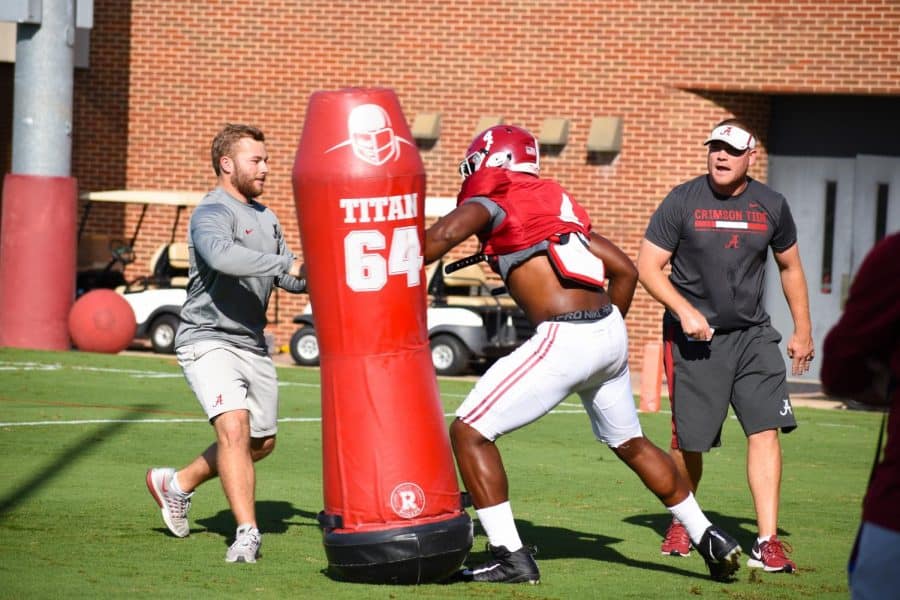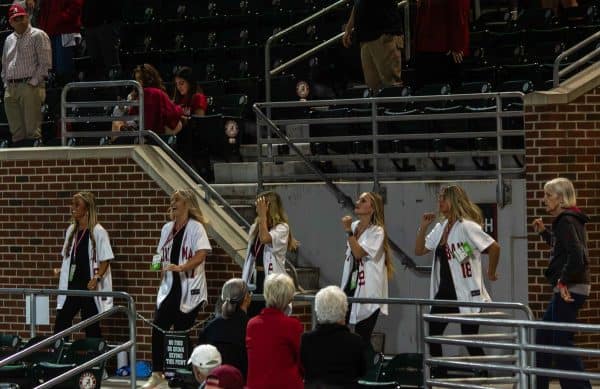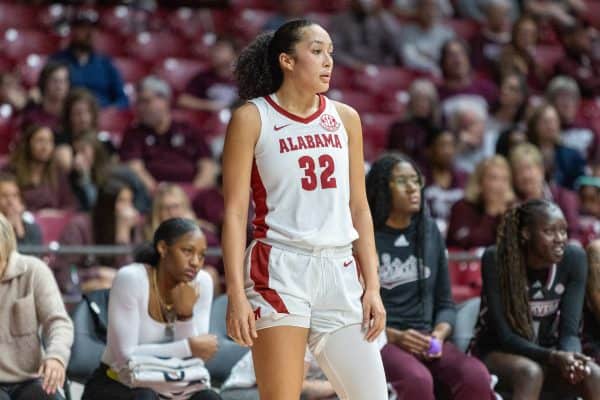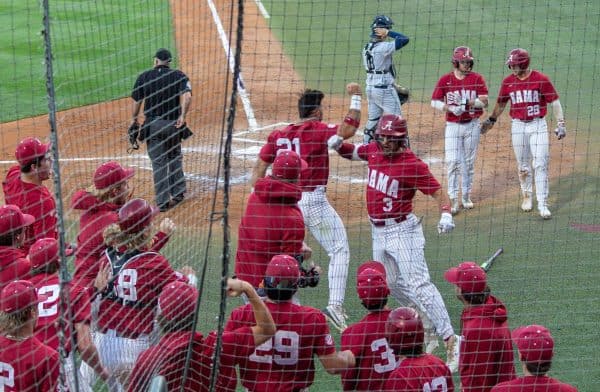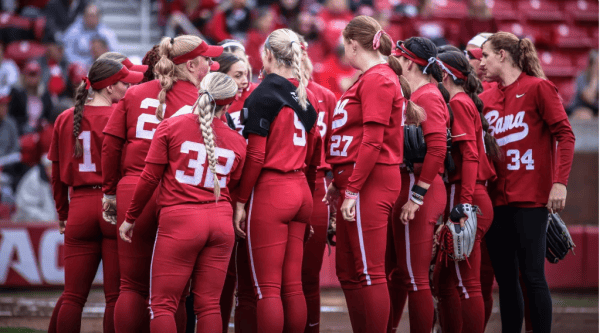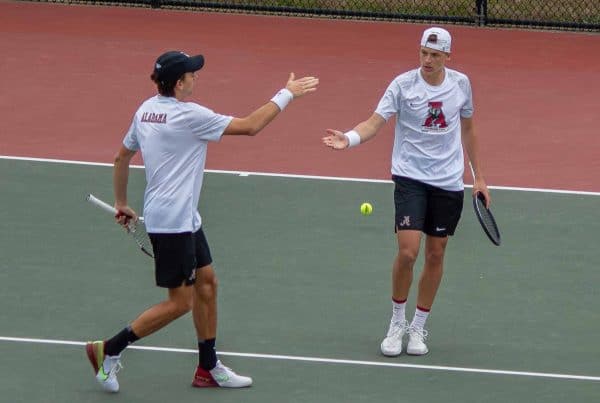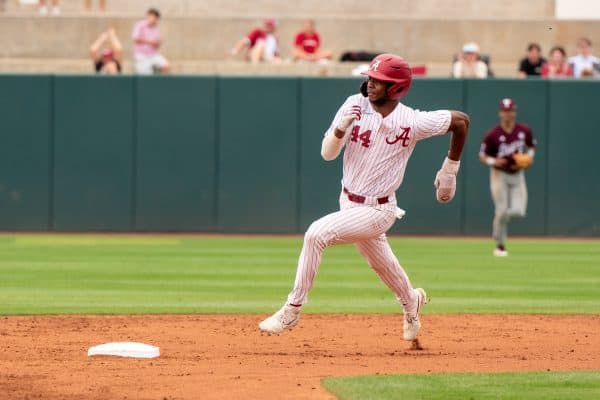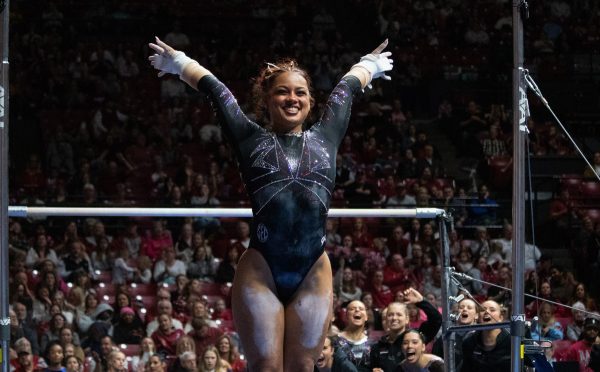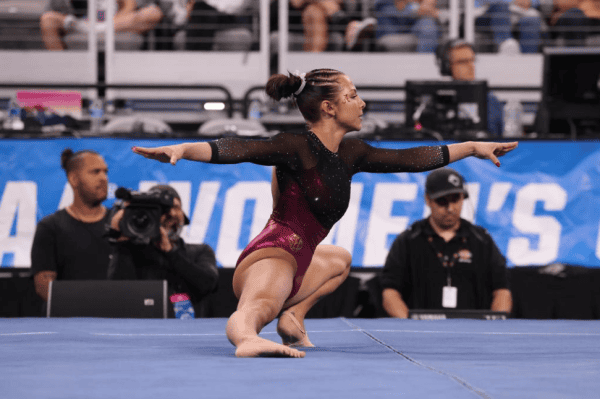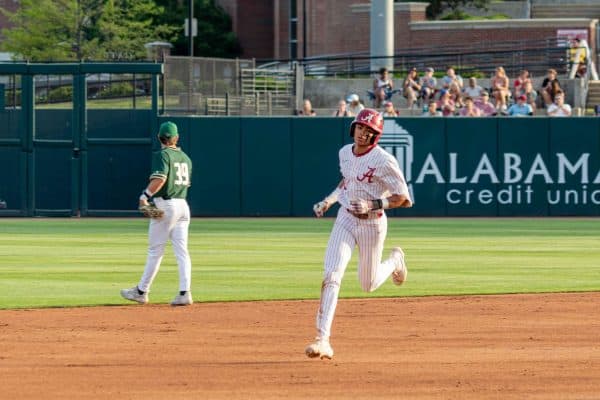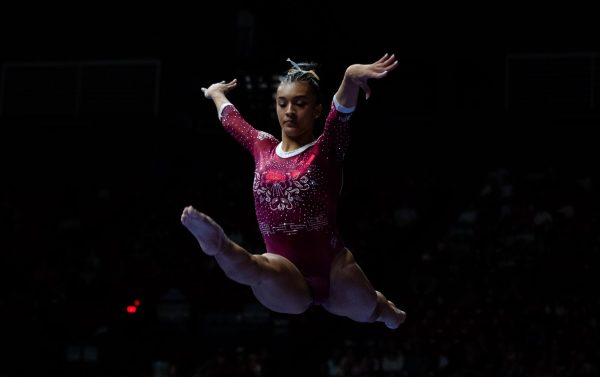Familiar faces tackle bigger coaching roles for Alabama football
Tosh Lupoi (right) has been a member of the Crimson Tide’s defensive coaching staff since 2015. CW/ Hannah Saad
August 20, 2018
With the departures of Brian Daboll and Jeremy Pruitt this offseason, Nick Saban was faced with the task of replacing both his offensive and defensive coordinator for the first time since 2008.
Instead of filling the vacancies with coaches from outside the program, Saban elected to promote two coaches who were already in house. Mike Locksley was given full control of the offense after serving as wide-receivers coach and co-offensive coordinator last year, while Tosh Lupoi was promoted from outside linebackers coach to defensive coordinator, a role he will share with new hire Pete Golding.
Locksley
Almost as soon as Daboll was hired as the Bills offensive coordinator in January, Alabama running back Damien Harris took to Twitter with a simple message: “Locksley for OC!!”
Harris’ social media campaigning was a success, as Saban elected Locksley for the position soon thereafter.
But Saban did not elevate Locksley simply because he has garnered the respect and admiration of Alabama’s players, although it almost certainly was a contributing factor. By naming Locksley OC, Saban instilled a sense of stability in an offense that has cycled through four coordinators in three years.
Locksley, who joined Alabama’s staff as an offensive analyst prior to the 2016 season, has worked under the last three, including Lane Kiffin, Steve Sarkisian and Daboll.
“That’s one of the benefits of going into year three,” Locksley said. “I came in under Lane, had a chance to see how things worked there. I had a chance to be here with Brian last season, and then all the great coaches that have been around this program the last two years that I have been here.”
The knowledge that Locksley has absorbed during his tenure with the Crimson Tide, and throughout his over 20-year coaching career, will be critical in his ability to lead an Alabama attack that is brimming with talent and experience.
“He’s been a coordinator for a long time. He’s been in our system,” Saban said. “He’s made great contributions in our program recruiting as well as how he impacts players, and he has experience being a head coach and a coordinator at other places where he’s had a tremendous amount of success.”
For Locksley, the problem won’t be a lack of playmakers, it will be finding ways to get them all involved.
“The good thing about our offense is that it’s been really diverse over the years in terms of the pro-style, the spread, the tempos, the huddling, running the ball, throwing the ball, all of these things have elements of this offense throughout the course of coach’s tenure,” Locksley said. “That won’t change. What will change is us figuring out which guys are the playmakers in the system and finding ways to get them the ball.”
Lupoi
During his first media obligation of fall camp, Lupoi kept his opening statement short and effective.
“I’m Tosh, and I’m fired up to be here,” Lupoi said.
There is no doubt that Lupoi, 37, is excited about the opportunity to lead an Alabama defense that led the nation in scoring defense (11.9 ppg) and finished second nationally in total defense (261.8 ypg) last season.
There is uncertainty, however, surrounding Lupoi’s ability to play-call, something that he has done only sparingly during his time as a position coach at California, Washington and Alabama.
“As an assistant where I’ve had some opportunities in the past where I might be able to do some play-calling,” Lupoi said. “It’s tough to do it full time. You have to do it as fast as possible to get the guys in the best possible positions.”
To help Lupoi get acclimated to his new play-calling responsibilities, Saban brought in Pete Golding from UTSA. During his successful two-year stint as the Roadrunners’ defensive coordinator, Golding gained experience as the defensive signal-caller on the sidelines.
“We’ll help him to do that [implement defensive plays during the game],” Saban said. “I also think that the other people on the staff that we have to complement him that have been coordinators like Pete Golding can also be a real help in some areas that will help us implement when the game comes.”
Besides assuming play-calling duties, Lupoi will face the unenviable challenge of replacing eight starters on defense, including Alabama’s entire secondary. Having spent most of his career focusing on the front seven, overseeing the secondary is a skill Lupoi has started honing since coming to Tuscaloosa.
“Before coming to Alabama, in one way or another, it had always been somewhat of a part of my responsibility – whether working with one outside backer – in the schemes that I came from, that was major goal of mine of four seasons ago is to come here and try to grow as much as possible and learn from the best in the business when it comes to the coverage concepts,” Lupoi said. “I think that process started when he came here to Alabama. Now I’ve gained a lot of confidence in that, but, of course, I’m still getting better and learning it every single day.”
Even though Alabama’s coordinators are new, Saban is adamant that the systems they operate will remain fundamentally the same. In essence, neither Locksley nor Lupoi will be reinventing the wheel Saban has meticulously crafted over the years.
“The transition that we’ve had with these guys [Locksley and Lupoi] has been pretty painless because we really didn’t change offenses, we really didn’t change defenses,” Saban said. “We didn’t change terminology for the players. So we have an Alabama defense and we have an Alabama offense.”
It’s how Locksley and Lupoi will be able to execute Saban’s offensive and defensive strategies that will determine their success as coordinators, and Alabama’s success as a team, this season.

